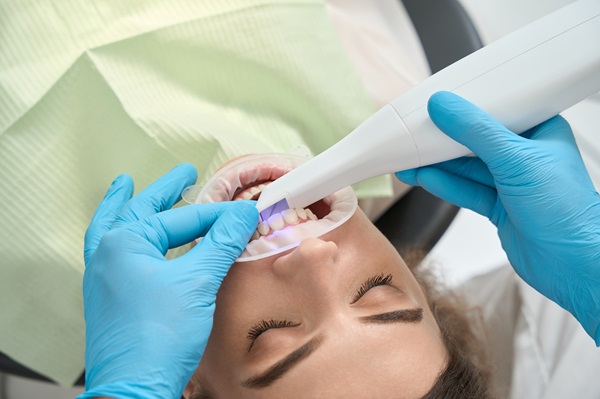If you’ve ever had a dental extraction, you know the longing to return to your everyday life, free from discomfort and limitations. We all look forward to the day when we can eat, exercise, and smile without any worries. So, when can you finally get back to your daily routine after a tooth extraction? Let’s find out in this blog.
Reasons You Might Need a Tooth Extraction
Tooth extraction is often recommended when preserving the tooth is no longer possible after exploring all available treatment options. Common reasons for tooth extraction include:
Severe Tooth Decay
Tooth decay, when left untreated, can progress to a point where the tooth structure is significantly compromised. In cases of deep-rooted cavities and extensive damage, extraction may be necessary to prevent the spread of infection and protect surrounding teeth.
Gum Disease (Periodontal Disease)
When the tooth’s foundation becomes compromised due to severe gum disease , extraction may be recommended to prevent the tooth from becoming loose or causing further complications.
Impacted Wisdom Teeth
Wisdom teeth or third molars typically emerge during late adolescence or early adulthood. Often, there is not enough space in the jaw for these teeth to grow properly, leading to impaction. Impacted wisdom teeth can cause pain, infection, and misalignment of adjacent teeth, necessitating their removal.
Overcrowding
Overcrowding of teeth can lead to misalignment and bite issues. In cases where the mouth is too crowded, your dentist may recommend removing one or more teeth to create space for orthodontic treatment, such as braces or clear aligners.
Infection or Abscess
A dental infection or abscess is a painful condition resulting from bacteria entering the tooth or gums. In some instances, antibiotics and root canal therapy can resolve the infection, but when the infection is severe, tooth extraction may be the only option to prevent it from spreading.
Fractured or Broken Teeth
Teeth can become fractured or broken due to trauma, accidents, or weakened tooth structure. If the fracture is severe and beyond repair, or if it extends below the gum line, extraction may be recommended.
Remember, the decision for tooth extraction is not taken lightly and is typically made after a thorough evaluation by your dentist. They always consider alternative treatments first and strive to preserve your natural teeth whenever possible. As such, regular dental checkups, good oral hygiene practices, and early intervention for dental issues are essential for preventing the need for tooth extraction.
The Tooth Extraction Procedure
Tooth extraction is a standard dental practice where your dentist gently removes a tooth from its socket. The process involves the following steps:
- During the initial consultation, the dentist conducts a detailed examination of your oral health. This includes taking X-rays to gain a detailed view of the tooth’s condition beneath the surface. These X-rays help assess the extent of the issue, plan the extraction procedure, and determine the most suitable approach for your specific case.
- Local anaesthesia is administered to numb the area around the affected tooth, ensuring that you won’t feel any pain throughout the extraction process. In addition to local anaesthesia, your dentist may also offer sedation options to help you relax and alleviate any anxiety you may have.
- Once you’re comfortably numb, your dentist uses forceps to grasp the tooth and remove it from the socket. In some cases, particularly with impacted wisdom teeth or complex extractions, the tooth may need to be divided into smaller pieces for easier removal.
- In cases where a surgical extraction is necessary, your dentist will make a small incision to access the affected tooth. Once the tooth is carefully removed, sutures may be placed to aid in the healing process.
It’s important to note that while the dental extraction process is generally straightforward, the specific steps and level of complexity may vary based on factors such as the tooth’s location, condition, and your overall health.
Tooth Extraction Aftercare
After a tooth extraction, proper aftercare is essential for a comfortable and uneventful recovery.
Immediate Post-Extraction Period
The immediate post-extraction period is a critical time for your oral health. After your tooth extraction, your focus should be on ensuring proper healing and minimising discomfort.
Here’s what to expect and how to navigate this crucial phase:
Bleeding
Some bleeding is normal after tooth extraction. Your dentist will provide gauze to control bleeding. Follow their instructions regarding gauze placement, changing it as needed, and avoiding actions that may dislodge the blood clot.
Numbness
You may still feel numbness in the extraction area due to the anaesthesia. Avoid biting your lip, cheek, or tongue until the numbness subsides.
Swelling
Mild swelling is common, and it typically peaks 48 hours after the procedure. Apply ice to the outside of your face in intervals for the first 24 hours, focusing on the cheek or jaw area corresponding to the side where the tooth was extracted. This helps reduce swelling in the facial region
Discomfort
Some discomfort is expected. Take prescribed or over-the-counter pain relievers as directed by your dentist.
Related: Is Tooth Extraction Painful? Procedure and Pain Management Options
Recovery Period
This phase is essential for ensuring your comfort and successful healing. Here’s what to expect and how to manage this part of your tooth extraction recovery:
Oral Healing and Residual Discomfort
During the recovery period, some residual discomfort and mild swelling may persist, but it should gradually subside. Manage any residual discomfort with over-the-counter pain relievers as recommended, and ensure you get adequate rest to support the healing process.
Stitches
If your dentist used stitches to close the wound, they may need removal, and your dentist will guide you on when this should be done.
Eating Patterns
You’ll be able to gradually reintroduce a wider variety of foods into your diet. Make sure to avoid hard or crunchy foods that may disturb the healing site for the initial few days.
Tips for a Speedy Recovery
To ensure a swift and comfortable recovery following your tooth extraction, here are some useful tips to follow and activities to avoid after tooth extraction:
- Avoid touching the extraction site with your fingers or tongue, as this can introduce bacteria and slow healing.
- Continue gentle brushing and flossing, avoiding the extraction site. Rinse with warm salt water as advised.
- Take rest and avoid strenuous activities that could increase blood flow to the extraction site.
- Drink plenty of water, but avoid using straws as the suction motion can dislodge the blood clot that forms in the extraction site.
- Stick to a soft diet for a few days, including foods like mashed potatoes, yoghurt, soup, and smoothies. Avoid hot, spicy, or hard foods.
- Steer clear of smoking and alcohol, as they can impede the healing process.
- Be vigilant for signs of infection, such as excessive swelling, pus, fever or persistent pain, and contact your dentist if you suspect any issues.
- Avoid lying flat immediately after the extraction; keep your head elevated to reduce blood flow to the area.
- If you have any concerns or unusual symptoms during your recovery, don’t hesitate to contact your dentist for guidance and assistance.
Read more here: A Guide to Tooth Extraction: Procedure, Risks, and Recovery
When Can I Resume Normal Activities?
Your ability to resume normal activities after a tooth extraction depends on various factors, including the complexity of the extraction and your individual healing process.
Rest is a critical component of the initial recovery phase. It’s advisable to take it easy for the first 24 hours. This means avoiding strenuous activities so as to allow your body to focus on healing.
As you progress through the recovery period, you can gradually reintroduce more of your normal activities. By this time, you should be able to transition to a diet with a wider variety of foods, and the residual discomfort should gradually subside.
However, it’s important to remain cautious when it comes to physical activities. Avoid vigorous exercise for at least a few days following the extraction, as strenuous movements can potentially dislodge blood clots and hinder the healing process.
Resuming more intense physical activities may take a bit longer, as it depends on how well you are healing. It’s essential to listen to your body and consult with your dentist regarding the timing of when it’s safe to return to your regular exercise routine or any other activities that may put additional stress on the healing area.
Your dentist will provide personalised guidance and monitor your progress during follow-up appointments to ensure you are on track for a successful recovery. Be patient and prioritise your oral health during this healing period to ensure a smooth transition back to your everyday life.
Your Path to Dental Wellness with Bellevue Hill Dental
At Bellevue Hill Dental, we are more than just a dental practice; we are your partners in achieving and maintaining optimal oral health. We explore alternative treatment options whenever possible, focusing on preserving your natural teeth and ensuring minimal invasiveness. However, when tooth extraction is the most suitable course of action, you can trust our team’s gentle and compassionate care. We are here to answer your questions, address your concerns, and support you on the path to a healthy, beautiful smile.



